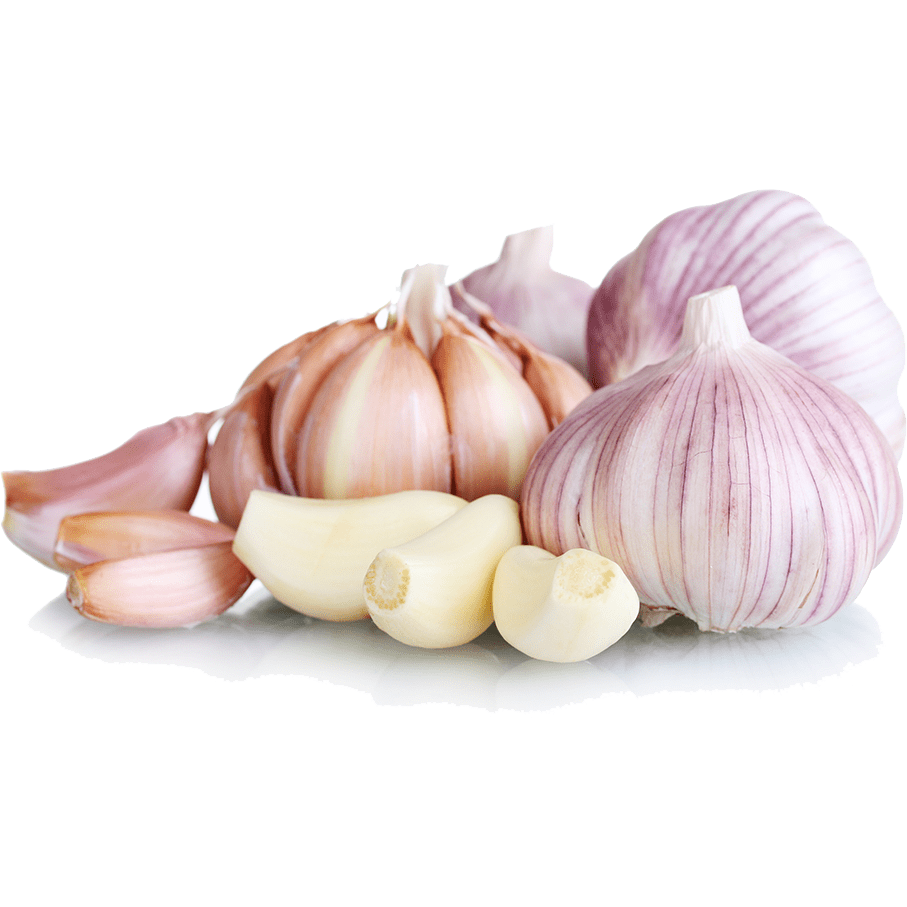Garlic
Allii sativi bulbi – Bulb of fresh garlic
Allium sativum L. – Alliaceae

Garlic is a perennial herb. The bulb is composed of branches. Each bulb is surrounded by white leaves and a red-purple shell. The tree is upright, and the leaves are narrow, pointed. The flower is a thin shield, while the fruit is a spherical capsule, filled with black seeds. Fresh or dried bulbs are used, they are harvested late in the summer.
The healing properties of garlic (Allium sativum) have been known since ancient civilizations. Traditionally, besides being a spice in cooking, it is used to eliminate ailments caused by colds (antimicrobial and anti-inflammatory effects), lower high blood pressure, improve lipid status, and all this thanks to its chemical composition.
Fresh garlic contains fructose complex, steroidal saponins, sugars and minerals. The most important ingredients of garlic are sulfur compounds, cysteine derivatives. In an undamaged plant, there is alliin (S-allyl-L-cysteine-sulfoxide), which at the slightest damage under the action of the alliinase enzyme is converted into allicin, from which diallyl disulphide is formed, from which the characteristic odor of garlic originates.

Traditionally, garlic has two prescribed indications where it can be used, prescribed by the EMA (European Medicines Agency):
1. It is used as a traditional herbal medicine for prevention and as an aid in the treatment of atherosclerosis (disease of blood vessels);
2. It is used as a traditional herbal remedy to relieve cold symptoms;
These two indications were prescribed by the EMA based on the long-term use of this herb. When it comes to indication 1 (prevention and help in the treatment of atherosclerosis), garlic is recommended for people over 18 years old, and when it comes to indication 2 (alleviation of cold symptoms) then we can recommend it to children over 12 years old and adults.
EFSA (European Food Safety Authority) has issued statements, which are currently in on-hold status, where it says that fresh garlic can be used to maintain the health of the cardiovascular system, by contributing to the maintenance of normal fat levels (cholesterol and triglycerides) in the blood, contributes to protection from stress, and due to its antibacterial and antioxidant effects, supports the health of the immune system, also contributes to the health of the liver and respiratory tract.
Garlic has long been known as the most effective plant species in the fight against bacterial infections. Many studies have proven that the oil extract of fresh garlic has a very broad antimicrobial effect, including bacteria that have become resistant to antibiotics. One study compared the effect of garlic oil extract therapy with the antibiotics gentamicin and ciprofloxacin, where it was concluded that garlic exhibits a synergistic effect with antibiotics and that the use of such combinations can be of great benefit in the treatment of bacterial infections caused by bacteria resistant to conventional antibiotic therapy.
The use of garlic is contraindicated in people who are sensitive to any component of garlic, as well as in people who are on saquinavir and ritonavir therapy (due to the risk that their plasma concentration may be reduced). Garlic preparations should be used with caution in patients who have oral anticoagulants in their therapy and/or antiplatelet therapy because their simultaneous use may prolong the bleeding time. Safety during pregnancy and breastfeeding has not been established. In the absence of data, the use of garlic-based preparations during pregnancy and breastfeeding is not recommended. There have been several studies that have shown the positive effect of garlic on fertility. There are very few side effects of garlic when it is used in moderate quantities, what can occur are bloating, fullness and stomach pain, sometimes allergic reactions are possible, as well as headache, dizziness (because garlic also has a hypotensive effect – lowers high blood pressure).
